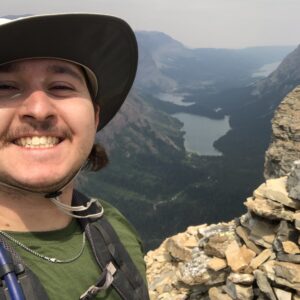Identifying Multi-use Adaptation Strategies for Disaster Risk Reduction (DRR)
What Benefits Can Be Obtained from a Localized, Multi-functional Approach to Adaptation Strategy Development for DRR?
Vulnerable groups, including racial and ethnic minorities and low-income populations, are disproportionately impacted by natural hazards as a result of factors such as underlying poverty and income inequality. Within Lincoln County, Oregon and throughout the Oregon coast, Latinx residents comprise approximately 10% of the population and is the fastest growing minority based on the most recent U.S. Census report. Many members of this community work in resource extraction and service sector industries, which are prevalent in Oregon’s coastal areas. Consequently, many of these jobs are positioned in the highest-risk inundation zones near the ocean.
Our Research:
Vulnerable groups, including racial and ethnic minorities and low-income populations, are disproportionately impacted by natural hazards as a result of factors such as underlying poverty and income inequality. Within Lincoln County, Oregon and throughout the Oregon coast, Latinx residents comprise approximately 10% of the population and is the fastest growing minority based on the most recent U.S. Census report. The Latinx community, predominantly composed of immigrants, generally has a lower average income compared to other populations across the state. Many members of this community work in resource extraction and service sector industries, which are prevalent in Oregon’s coastal areas. Consequently, many of these jobs are positioned in the highest-risk inundation zones near the ocean.
Going forward, this research will build upon the results of the Master’s thesis research to continue executing in-person trainings, distributing print and video materials, participating in resource fairs and partnering with community organizations to develop community resilience while incorporating an evaluation component and assessment methodology that can inform work in other collaboratories aimed at developing community resilience among marginalized communities.In a master’s thesis research project completed in June 2023, we explored how valued locations and social support networks among marginalized populations in high-disaster-risk areas help them adapt to daily challenges and play a crucial role in disaster preparedness and recovery. Through focus group discussions and an innovative conceptual mapping activity, we identified preferred community assets that Latinx residents might rely on after a disaster. We found that community-based organizations, churches, and schools, which are highly valued by the community, possess substantial social capital. This includes strong linking social capital—relationships that bridge power or authority gradients in society—which has been crucial in past disasters by connecting Latinx community members with external resources. However, bridging social capital – connections among individuals who differ in backgrounds or socioeconomic characteristics – was found to be largely absent in this research. This is a potential vulnerability and opportunity for developing resilience as bridging social capital has been found to support effective disaster recovery by providing access to new information and resources.
Research Questions:
Outcomes:
Additional Material
Publications
Blockstein, J., J. Tilt. (2023) “Focus Group Protocol (English and Spanish) – Questions, Conceptual Mapping Activity, Demographics”, in Critical Links: Exploring the Connection between Community Assets and Latinx Social Capital for Disaster Resilience along the Oregon Coast. DesignSafe-CI. https://doi.org/10.17603/ds2-m009-vg97 v1

